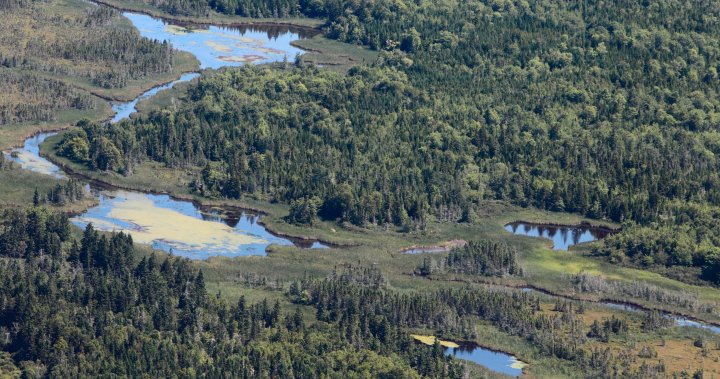
Rising seas: Delays to safeguarding Chignecto Isthmus worry N.S., N.B. politicians
Global News
Experts have for decades warned that a powerful storm could overwhelm aging dikes and flood large portions of the Amherst, N.S., area.
Legislators on both sides of the Nova Scotia-New Brunswick boundary say efforts to safeguard their area from a potential climate disaster have dragged on too long.
An engineering study commissioned to develop “three viable solutions” to the risk of the 35 kilometres of dikes being overwhelmed on the Chignecto Isthmus, which straddles the boundary, was expected in the spring but still hasn’t been released.
Meanwhile, an Oct. 15 deadline for seeking Ottawa’s help under the disaster mitigation and adaptation fund for such projects has passed.
Elizabeth Smith-McCrossin, the Independent member of the legislature for Cumberland North _ the Nova Scotia riding on the provincial boundary _ said in an interview Wednesday that she is preparing a private member’s bill that would call on the new Progressive Conservative government to commit to funding Nova Scotia’s share of a solution.
“Even though the past (Liberal) government said it was a priority, there isn’t any money allocated for it, and it’s going to take significant dollars,” she said.
“I don’t know the real cause of the delays. But as a member for the area, I’m asking for it to be made a priority, and soon.”
Megan Mitton, the Green Party member representing the New Brunswick riding of Memrancook-Tantramar, also said the delays are unacceptable given the risks to about 20 kilometres of rail line, highway, energy and communications infrastructure in the low-lying region that connects the two provinces.
“We don’t want to end up with a situation where whole communities have been flooded, sewage lagoons damaged and people are displaced,” she said in an interview. Mitton’s riding includes the community of Sackville, which has key infrastructure, including a sewage treatment plant, protected by the dikes.











